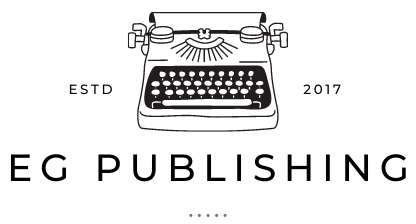So you’re a small business or nonprofit and would like to see your organization covered by the local media – be it TV, radio or print. To do so, you need to do the legwork to let nearby journalists know that you exist and what you contribute to the news cycle. Essentially, why your organization’s news matters to their audience—the news consumer.
Before you dive deeper, you need to ask yourself: does this news matter? Your organization’s latest news might matter to you because you have a stake in the organization, but does it matter to the average person? A good question to ask yourself is: why should someone who may have never heard of you care? How does your news benefit them?
For example, a grand opening might be newsworthy as it allows local business goers to know that there’s a new business in town. But, the fact that you added a new menu item or that you launched a new website may not. One good rule of thumb is to ask friends, family or acquaintances if they think said topic is newsworthy. If you keep getting “no,” you may need to re-think or wait for another news topic. (On the other hand, your news that might not be ideal for pitching to the media may be perfect for another mode of communication, like social media or an e-newsletter—those communication vehicles go directly to people who have opted in and have a stake in your business or cause.)
Once you have your news item in hand, you can begin the next step of writing a press release. This helps journalists who are often pressed for time have all of the information in front of them.
What should your press release include?
• A point of contact for the media.
Example:
Media Contact
Name
Title
Cell phone
E-mail
• A short and sweet headline. One rule of thumb is that, if the headline takes more than one line, it’s too long. Picture it as a headline in a newspaper or web article.
• The month, day and year of the release. Then, the city and state of the news origin. Example:
FOR IMMEDIATE RELEASE June 14, 2018
Phoenix, Ariz.—Then the first sentence of your press release starts.
• The body of your press release. Keep it to one to two pages if possible. Stick to facts. Journalists should understand what your news is about in the first paragraph. Usually, the body includes: the first paragraph, quote, an additional paragraph or two, if needed, then the boilerplate.
• When it comes to quotes, make sure to use proper AP Style grammar. Example:
“Quotes should only be a few sentences,” said Shelly Everson, public relations coordinator at ABC XYD. “Make sure your punctuation and grammar are correct.”
• Boilerplate. This is where you place basic info about your organization. It needs to be brief and provide a way for people to find out more.
Additional tips:
• Make sure you choose an easy-to-read font that can be easily copied and pasted.
• Utilize AP Style. You can buy an AP Style book at most local bookstores or order an online copy.
• Have someone else read it before you send it out. It’s helpful to have multiple pairs of eyes!
• Fact check to make sure all of the included information is correct.
After you’ve written your press release…
It’s time to pitch it to the media. Here are some helpful tips on how to do so:
• Always (always!) send your press release via e-mail. Copy and paste it into the body of your e-mail as some publication’s servers won’t allow for attachments.
• Choose an e-mail header that’s catchy, do a short greeting and intro, then copy and paste your press release. Make sure your chosen contact knows that you’re available for follow up questions or an interview—and make yourself available! Check your e-mail and phone regularly.
• How do you find media contacts? Research local publications in your area, go to each publication’s website, and find their “contact us” page. Most publications, TV and radio stations have e-mails listed or have a general inbox where they accept press releases. (Usually it’s something like newstips@… or editor@…). You can also subscribe to a service like Finder Binder, a database for local media contacts.
• Have high resolution photos available. Any basic camera or smart phone can take a high resolution photo – these are images that are 1 MB or higher / 300 DPI in file size. If you take a photo with your phone, e-mail it to yourself at the original file size. Even better, consider having professional photos taken of yourself, your products, etc. and have them on file for the media to utilize. You can hire a local photographer or a photo student building their portfolio.
• Oftentimes, the media won’t reply to pitches. Feel free to follow up (again via e-mail) within a week or so of sending the press release BUT if no reply after that, the answer is no. Remember, this is most often not a reflection on you—journalists are strapped for time, it’s an unpredictable news cycle, pressure from advertisers, and more. Don’t be afraid to try again when you have another press release to share.
• If a journalist does reply, get back to them ASAP. Be kind, courteous, and thoughtful.
• You can also send your release to non-journalists. These can include your board (if you’re a nonprofit), your staff, close friends and more. You never know who knows who.
• Consider advertising in your local media outlets. While editorial coverage is free to you, the hard truth is that—just like sales keep your doors open—advertisers keep local publications afloat. When you advertise in a local media outlet, you get to control the ad message *and* you can often be a go-to resource for stories that fall into your wheelhouse. Some publications even offer packages where you get a feature story along with your ad. Don’t be afraid to politely ask.
• If you’re overwhelmed, hire a professional. Just like you hope that those in need of your services hire you, public relations professionals are also happy to help you spread the word.
Other ways to utilize a press release
Once you have content written for a press release, you can utilize it for other purposes. For example, that same content can be used for e-newsletters, social media posts, or a blog post on your business’ website. You can also collect press releases for a press page tab on your website as well.


